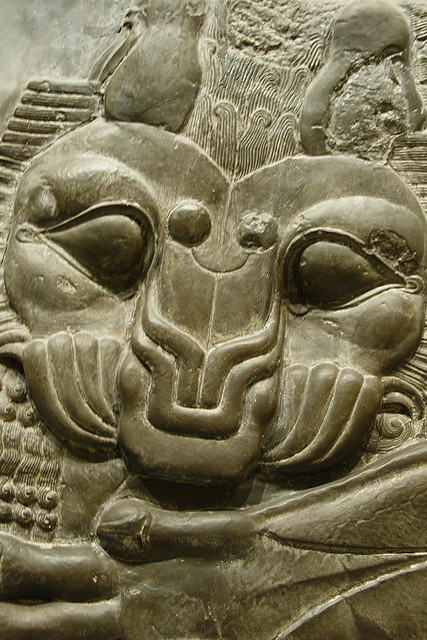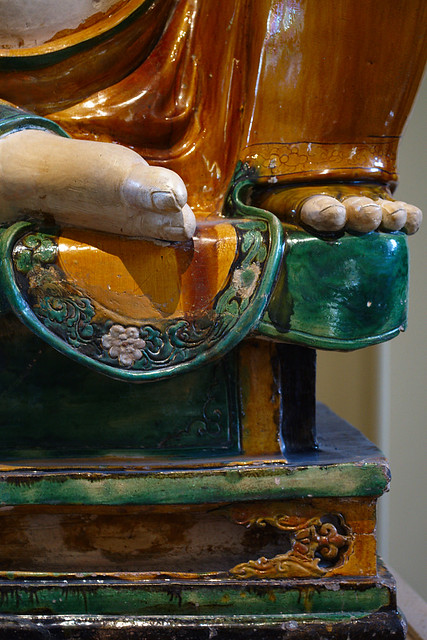The next chapter of the history of Plantagenet England returns to the chronological discussion of the politics of the era, and Prestwich starts by reminding us that Edward I had presided over a 20 year span of peace and prosperity. This had now come to an end in part because Edward’s main advisers during that period had died, as had his first wife. The next couple of decades covering the end of Edward I’s reign and the start of Edward II’s were to be characterised by war and political crises.
Orientation Dates:
- The Yuan dynasty ruled China from 1279 to 1378 (post).
- Philip IV (the Fair) ruled France from 1285 to 1314.
- Edward I died in 1307.
- Edward II reigned from 1307 to 1327.
- Edward III born 1312.
Political Crises, 1294-1311
The political problems at the end of Edward I’s reign stemmed from war – the financing thereof, and the rationale for them. Edward I had wanted to lead a Crusade, but this turned out to be infeasible – in part because of the breakout of wars nearer home. In the first four years of this period there were several conflicts: 1294 war broke out with France (meaning that Gascony needed defending), there was a significant Welsh rebellion in 1294/5, there was a campaign against the Scottish in 1296 and finally Edward lead troops to Flanders in 1297. Prestwich says that in total this cost £750,000 (in the money of the time), which is an astonishing large sum – for reference the total value of the Church’s wealth in England at this time had been assessed at £200,000.
So during these years the Crown was trying to raise money any way it could. Direct taxation (via grants of taxation by Parliament) were the least controversial of the measures taken. The Church was also taxed heavily, until this was forbidden by the Pope in 1297 (and even then it continued because the King threatened to remove royal protection from any cleric who didn’t pay a fine which matched the amount they would’ve been taxed). The Crown also did things like seize all coin held by churches to “check for clipped and counterfeit coin” – most of this didn’t make it back to the churches concerned. Twice attempts were made to seize all the wool in the country, and for the Crown to then sell this itself – cutting out the merchants and keeping all the profits for themselves. The first time this was abandoned and instead customs duties payable on wool were raised significantly (generating £110,000 over the 3 years till 1297). The second wasn’t officially abandoned, but wasn’t particularly well carried out and relatively few sacks of wool were actually seized.
In previous years Edward had also relied on an Italian banking family, the Ricciardi, for loans but they were bankrupted in 1294. In part this was because they were caught in the middle when the Anglo-French war broke out, with neither King happy with them – and Italian depositors started to worry and withdraw their funds, so the Ricciardi’s bank collapsed. This left Edward I with no co-operative bank to help fund his wars on the promise of future payment.
Taxes and Crown expenditure weren’t the only issues bubbling to the surface by 1297. There was also the issue of military service – the feudal lords were not feeling co-operative with the King, and were starting to refuse feudal summonses. In some cases they were bullied into providing troops (for instance to go to Gascony) by threats to call in their debts, in other cases there wasn’t anything to provide leverage. The subject of whether the King should be pursuing these wars was also controversial – the wars in France and Flanders were unpopular, because the Scottish were causing trouble in the north and the barons felt this was where military effort should be focused.
So in 1297 matters came to a head. Whilst those who lead the opposition among the nobility and the clergy had personal grievances as well they were almost entirely acting in what they believed the country’s interests to be rather than their own interests. The key difference between this crisis and that of 1258 (discussed a couple of chapters ago, post) was that the conflict was based not on deep seated grievances with the way the country was being run but was instead almost entirely about the current wars. The terms King and nobility (and King and Church) agreed to in the end were not radical, and didn’t inhibit the King from ruling the country himself (unlike in 1258). The grievances that were not related to the wars were related to the King’s enforcement of Forest Law – at times in places where it was not traditional – so one of the things he promised was to carry out an inquiry into this. Another promise was a reiteration that taxation should only be imposed by assent, and that in addition it should be for the common profit (rather than the King’s gain). The documents didn’t really go into details of how this was to be ensured.
The aftermath of this crisis wasn’t peace and tranquillity. Conflict rumbled on until 1301, with Edward trying to wriggle out of the promises he’d made about Forest Law and the nobility refusing (although not always successfully) to grant taxes till this was done. From 1301 to the end of Edward I’s reign in 1307 things calmed down. In part this was due to the opposition leaders dying, or marrying into the royal family, or in the case of the leading churchman (Winchelsey) being summoned by the new Pope (an ally of Edward’s) to answer charges against him. The Scottish war also provided political peace in England – it was a popular war being in defence of the realm rather than a foreign adventure. So taxation for this war was less objectionable than for the Flanders campaign in 1297.
Edward I’s personality was also an important factor in both the relative small size of the 1297 crisis and the increasing stability after 1301. He was a formidable man, and Prestwich recounts a couple of stories of the time of men dropping down dead when confronting the King or the like. He wasn’t loved by his subjects, and common criticisms were about his stubbornness and his wilfulness. Prestwich says that in Edward’s youth he had been compared to a leopard – fierce and brave like the lion (leo) and unreliable and deceitful like the pard. But he was a feared and respected monarch, and this held the country together.
Edward II was to be a very different sort of King. Prestwich very quickly dismisses the speculative idea that better training might’ve made Edward II a better King with the point that Edward II had been given opportunities (like the 1301 Scottish campaign) to prove himself and learn to be King. But he hadn’t demonstrated any capability (or desire to do more). Prestwich says the most politically significant facet of Edward II’s life before taking the throne was his developing friendship with Piers Gaveston. Edward I disapproved, probably because Edward II was asking for too many favours for Gaveston, and had sent Gaveston into exile in early 1307. One of Edward II’s first acts on taking the throne was to reverse this.
The reaction of the country at start of Edward II’s reign was guardedly optimistic – a generous tax was granted despite the failure of the invasion of Scotland (not quite started when Edward I died, and abandoned shortly after). But even in early 1308 there are signs of political argument taking place within the nobility. A group of magnates signed an agreement that “things” had been done that were contrary to the King’s honour and they should work to rectify them. It’s unclear now whether this is magnates loyal to Edward II protecting his interests from more radical magnates, or whether it’s a veiled attack on Gaveston and these are magnates loyal to the memory of the old King. But either way there was clearly some dissension within the nobility. Edward II married Isabella of France (the 12 year old daughter of the King of France) in January 1308, and was crowned in February of that year. There was some attempt to demand the delaying of the coronation until Gaveston was exiled again, but it didn’t succeed. However Edward II’s coronation oath added a clause to “maintain and preserve the laws and rightful customs which the community of the realm shall have chosen”. The precise meaning of this is debated by historians, Prestwich says it probably meant different things to different people at the time too. The clause was very shortly afterwards used to bully the King into exiling Gaveston again.
Prestwich spends a bit of time talking about the hostility towards Gaveston and the nature of the relationship between Edward & his favourite. He comes down on the side of this not being a homosexual relationship – although admits that no-one will ever know. On the “yes” side for this are some insinuations at the time about how Edward loved Gaveston more than his new Queen. But on the “no” side are that this wasn’t as widespread a rumour as it would surely have been if it were true. Prestwich also cites Edward’s children with (and early affection for) Isabella and an illegitimate son, and Gaveston’s own daughter, as evidence there was no sexual relationship between the two men – but I don’t see that that rules anything in or out. Edward did after all have an incentive to produce an heir which might overcome a distaste for sex with women, and he could also have been bisexual.
But modern desire to know what was really going on aside, the nobility of the time had other reasons to dislike Gaveston whether or not he was sleeping with the King. He was extravagant and arrogant, so he spent the King’s money and rubbed everyone else’s noses in the fact. He mocked the other members of the court, and was known for a waspish tongue. Gaveston caused no problems during his exile, but on his return in 1309 he was back to irritating the nobility at large.
Matters came to a head in 1310, and this crisis is more like that of 1258 than that of 1297. The King was deemed to’ve frittered away his treasure and was forced to agree to a council of Ordainers who had full power to reform the realm and the royal household. In exchange all the King got was a promise that this was not to form a precedent. The Ordinances mostly looked back to previous Articles and precedent from the earlier crises of Edward I’s reign (and his father’s before) – even back to the Magna Carta. However it wasn’t particularly radical, and didn’t try to impose the sorts of restrictions on royal power that were tried in the 1250s and 1260s. It was more a purge of corrupt advisers or officials and a drawing up of more explicit rules for how consent for taxation and other issues (like the King leaving the realm) should be obtained. One significant difference between the Ordinances and earlier documents about obtaining consent is that it moved this from being from “the community of the realm” to being more explicitly via representation in Parliament.
The publication of the Ordinances didn’t solve the crisis. Edward II saw the renewed demand for Gaveston’s exile and the restrictions on his ability to exercise royal patronage (to avoid future Gaveston-esque situations) as completely unacceptable. So this wasn’t the dawn of an age of peace & prosperity like the authors would’ve hoped, it just kicked off more trouble – which is the subject of the next chapter.




